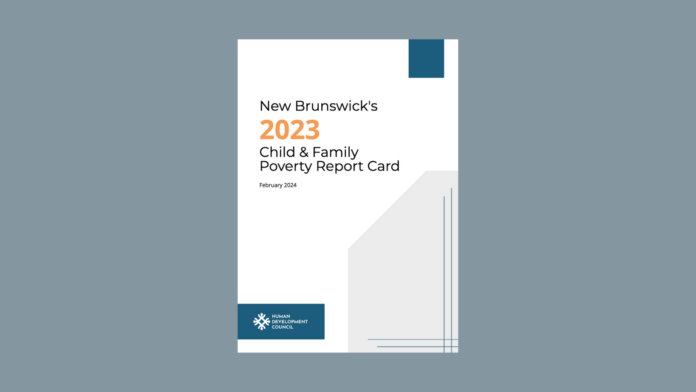
The Saint John Human Development Council released New Brunswick’s 2023 Child & Family Poverty Report Card highlighting that the child poverty rate in Canada increased from 13.5 per cent in 2020 to 15.6 per cent in 2021.
Randy Hatfield, executive director of the Saint John Human Development Council, explained that they use a Low-Income Measure because it adjusts on different variables.
“I remember doing a focus group here in Saint John a long time ago and I’ll never forget one high school student saying, ‘You know, when you’re poor in Rothesay, you’re really poor.’ And that just speaks to the relative positioning of people,” said Hatfield.
Another source of information used is the After-Tax Census Family Low Income, which shows that in 2021, 26,360 children were in poverty. This represents 18.7 per cent of children in New Brunswick.
“What we do when we look at that 18.7 per cent provincial rate is try to disaggregate it and try to take a look at where we have pockets of vulnerability everywhere have higher incidences of poverty,” said Hatfield.
New Brunswick’s 2023 Child & Family Poverty Report Card pointed out the unequal distribution of income across the top ten income-earning families with children holding more share of income than the bottom four deciles combined.
Hatfield said some of the factors that contribute to child poverty in New Brunswick are a low minimum wage, one of the lowest assistance rates in the country, low educational attainment in some communities and challenges in labour force attachments.
“You have to put more money in the hands of people and you can do that by better jobs, paid sick leave, a living wage, not a minimum wage and you need stronger social support programs,” he said.
According to the report, without government transfers child poverty would rise to 40.6 per cent. Examples of government transfers are Canada Child Benefit, Employment Insurance and GST/HST credits.
Hatfield explained how during the COVID-19 pandemic, the Canadian government provided funds to the people and the poverty rates “plummeted,” but then when it stopped the rates “ravine.”
“By doing that, we acknowledge that there’s a minimum amount of money that people need to cover their basic needs … we haven’t got that system in Canada,” said Hatfield.
In 1989, the members of the Canadian Parliament unanimously voted to eradicate child poverty by 2000, today it is still a work in progress.
Hatfield said that they create the report card annually to hold the government accountable for “their failed promise.”
“I was disappointed with the numbers; I think it speaks to the fact that more and more people are being left behind.”
